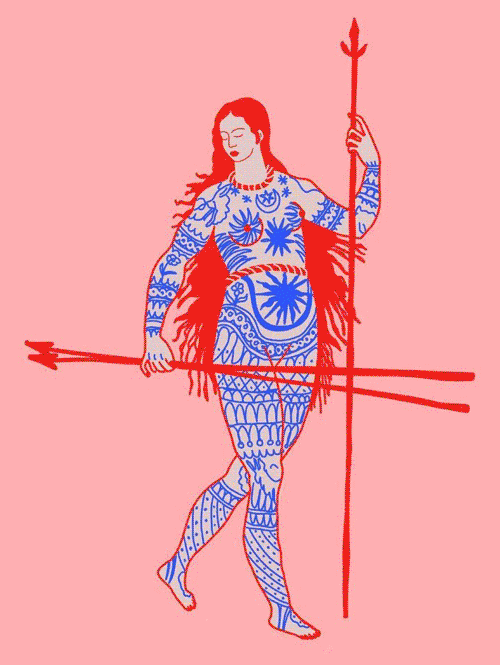Create an account
Welcome! Register for an account
La password verrà inviata via email.
Recupero della password
Recupera la tua password
La password verrà inviata via email.
-
-
- Categorie
- #iorestoacasa
- Agenda
- Archeologia
- Architettura
- Arte antica
- Arte contemporanea
- Arte moderna
- Arti performative
- Attualità
- Bandi e concorsi
- Beni culturali
- Cinema
- Contest
- Danza
- Design
- Diritto
- Eventi
- Fiere e manifestazioni
- Film e serie tv
- Formazione
- Fotografia
- Libri ed editoria
- Mercato
- MIC Ministero della Cultura
- Moda
- Musei
- Musica
- Opening
- Personaggi
- Politica e opinioni
- Street Art
- Teatro
- Viaggi
- Categorie
-
Matter
A symposium about Matter. Matter is the fourth part of series of symposia entitled “Personal Structures Time Space Existence”.
Comunicato stampa
Segnala l'evento
VENICE – A symposium about Matter will be held on June 4, 2009 from 1 – 4 pm at the Palazzo Cavalli Franchetti, San Marco Campo Santo Stefano - San Marco, 2842 (www.istitutoveneto.it). The symposium is sponsored by The Global Art Fairs Foundation (www.globalartaffairs.org) and is held in conjunction with the Glass Stress, an offical collateral event of the 53rd Venice Biennale. Symposium speakers include Daniel Buren, Gotthard Graubner, Peter Lodermeyer, Jean-Michel Othonel and Rene Rietmeyer. “Matter” is open to the public and is free.
Matter is the fourth part of series of symposia entitled “Personal Structures Time Space Existence” organized by the Global Art Affairs Foundation, in cooperation with local institutions, curators Sarah Gold and Karlijn De Jongh, art historian Peter Lodermeyer, and artist Rene Rietmeyer .The first symposium “Time” was held in 2007 at Arti et Amicitiae in Amsterdam, the second, “Existence”, 2008 at the Setagaya Art Museum in Tokyo and the third “Space”, 2009 at the New Museum in New York.
In September 2009 a book on all of the symposia with additional artists interviews, will be published by Global Art Affairs Publishing, New York, and distributed by Cornerhouse Publications. For more information visit the web site www.personalstructures.org
Symposia General Concept:
By abandoning the representation of external reality, artistic parameters themselves (such as color, size, composition, material, etc.) have become themes of non-representational art. The more non-representational art makes the work processes a subject and includes the viewer and his/her receptive activities in the works, the more the basics of production and reception of art come into focus.
Artworks are created, exist, and recognized in time and space. This seems so obvious that its actual meaning is often overlooked. Therefore, time, and space as ”forms of intuition (Anschauungsformen)“ (Kant) as well as existence (of the artist, the artwork and the viewer) were the themes of the previous ”Personal Structures“ symposia. Even though Time, Space, and Existence are inextricable, the ”Personal Structures“ symposia in Amsterdam, New York and Tokyo focused on one of the three terms as the major subject.
In Venice the center of discussion will be: MATTER
Matter is everywhere. Matter is anything that has mass and therefore takes up space. Materials to create art works are chosen for very specific reasons. The materials used by artists are chosen consciously for their properties. These properties support the ideas, which the artists want to communicate. The materials that artists choose to use will be one of the topics discussed at the symposium.
In Amsterdam the center of discussion was: TIME
Time always implicates movement or change. The way we experience, think, and perceive time is in constant flux, i.e. depends on time. This also applies to artistic concepts of time: The possibilities for visualizing time using artistic means unavoidably change over the course of time. ”Personal Structures“, as a forum for artists working in a non-representational manner, focuses on art, which favors a concentrated, but subjective, form language. Hereby, directly or indirectly, time-concepts play an important role. In Amsterdam, several artists spoke for whom the subject “time” is of great importance. Artists, art historians, and museum people were invited to join the discussion about time and time concepts in non-representational art.
In Tokyo the center of discussion was: EXISTENCE
Existence, in the strictly philosophical sense (for example, as it is used by Heidegger and Sartre), is the “kind of being” that exclusively applies to humans. “To exist” does not merely mean being present but rather “self-design”, being open for possibilities, and freedom. We live in a thoroughly organized world under constant pressure – the pressure to perform, the pressures of time and conformity – as well as pressures stemming from the influence of the mass media. Given these circumstances, art can bear, regardless of purpose, the function to articulate existential topics and create the possibility for moments of intensified self-awareness. Therefore, one’s own existence, with its particular terms and conditions, can become an artistic subject and thus, serve as model for the self-encounter of the viewer.
In New York the center of discussion was: SPACE
In his very last text in 1993, Donald Judd stated that until that time there had been virtually no discussion of space in art. “After a few thousand years space is so unknown that a discussion of it would have to begin with a rock”. Consequently, for the second symposium, basic artistic questions related to space and spatiality were discussed. On the one hand, “space-relatedness” means the three-dimensional body of the artwork itself or its aesthetic interaction http://dict.leo.org/ende?lp=ende&p=/gQPU.&search=interactionwith the actual space in which it is placed. On the other hand, “space-relatedness” means the various notions of space depending on personal, cultural, and social circumstances. These become visible in the artist’s specific choice of his or her means of expression.
Matter is the fourth part of series of symposia entitled “Personal Structures Time Space Existence” organized by the Global Art Affairs Foundation, in cooperation with local institutions, curators Sarah Gold and Karlijn De Jongh, art historian Peter Lodermeyer, and artist Rene Rietmeyer .The first symposium “Time” was held in 2007 at Arti et Amicitiae in Amsterdam, the second, “Existence”, 2008 at the Setagaya Art Museum in Tokyo and the third “Space”, 2009 at the New Museum in New York.
In September 2009 a book on all of the symposia with additional artists interviews, will be published by Global Art Affairs Publishing, New York, and distributed by Cornerhouse Publications. For more information visit the web site www.personalstructures.org
Symposia General Concept:
By abandoning the representation of external reality, artistic parameters themselves (such as color, size, composition, material, etc.) have become themes of non-representational art. The more non-representational art makes the work processes a subject and includes the viewer and his/her receptive activities in the works, the more the basics of production and reception of art come into focus.
Artworks are created, exist, and recognized in time and space. This seems so obvious that its actual meaning is often overlooked. Therefore, time, and space as ”forms of intuition (Anschauungsformen)“ (Kant) as well as existence (of the artist, the artwork and the viewer) were the themes of the previous ”Personal Structures“ symposia. Even though Time, Space, and Existence are inextricable, the ”Personal Structures“ symposia in Amsterdam, New York and Tokyo focused on one of the three terms as the major subject.
In Venice the center of discussion will be: MATTER
Matter is everywhere. Matter is anything that has mass and therefore takes up space. Materials to create art works are chosen for very specific reasons. The materials used by artists are chosen consciously for their properties. These properties support the ideas, which the artists want to communicate. The materials that artists choose to use will be one of the topics discussed at the symposium.
In Amsterdam the center of discussion was: TIME
Time always implicates movement or change. The way we experience, think, and perceive time is in constant flux, i.e. depends on time. This also applies to artistic concepts of time: The possibilities for visualizing time using artistic means unavoidably change over the course of time. ”Personal Structures“, as a forum for artists working in a non-representational manner, focuses on art, which favors a concentrated, but subjective, form language. Hereby, directly or indirectly, time-concepts play an important role. In Amsterdam, several artists spoke for whom the subject “time” is of great importance. Artists, art historians, and museum people were invited to join the discussion about time and time concepts in non-representational art.
In Tokyo the center of discussion was: EXISTENCE
Existence, in the strictly philosophical sense (for example, as it is used by Heidegger and Sartre), is the “kind of being” that exclusively applies to humans. “To exist” does not merely mean being present but rather “self-design”, being open for possibilities, and freedom. We live in a thoroughly organized world under constant pressure – the pressure to perform, the pressures of time and conformity – as well as pressures stemming from the influence of the mass media. Given these circumstances, art can bear, regardless of purpose, the function to articulate existential topics and create the possibility for moments of intensified self-awareness. Therefore, one’s own existence, with its particular terms and conditions, can become an artistic subject and thus, serve as model for the self-encounter of the viewer.
In New York the center of discussion was: SPACE
In his very last text in 1993, Donald Judd stated that until that time there had been virtually no discussion of space in art. “After a few thousand years space is so unknown that a discussion of it would have to begin with a rock”. Consequently, for the second symposium, basic artistic questions related to space and spatiality were discussed. On the one hand, “space-relatedness” means the three-dimensional body of the artwork itself or its aesthetic interaction http://dict.leo.org/ende?lp=ende&p=/gQPU.&search=interactionwith the actual space in which it is placed. On the other hand, “space-relatedness” means the various notions of space depending on personal, cultural, and social circumstances. These become visible in the artist’s specific choice of his or her means of expression.
04
giugno 2009
Matter
04 giugno 2009
incontro - conferenza
Location
PALAZZO FRANCHETTI
Venezia, San Marco, 2847, (Venezia)
Venezia, San Marco, 2847, (Venezia)
Vernissage
4 Giugno 2009, dalle ore 13 alle ore 16
Sito web
www.personalstructures.org








